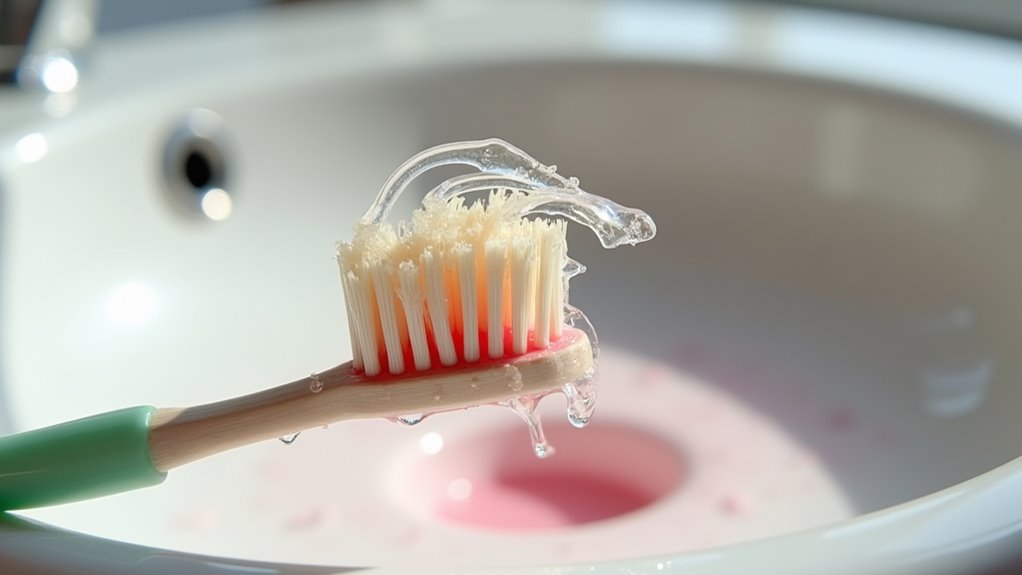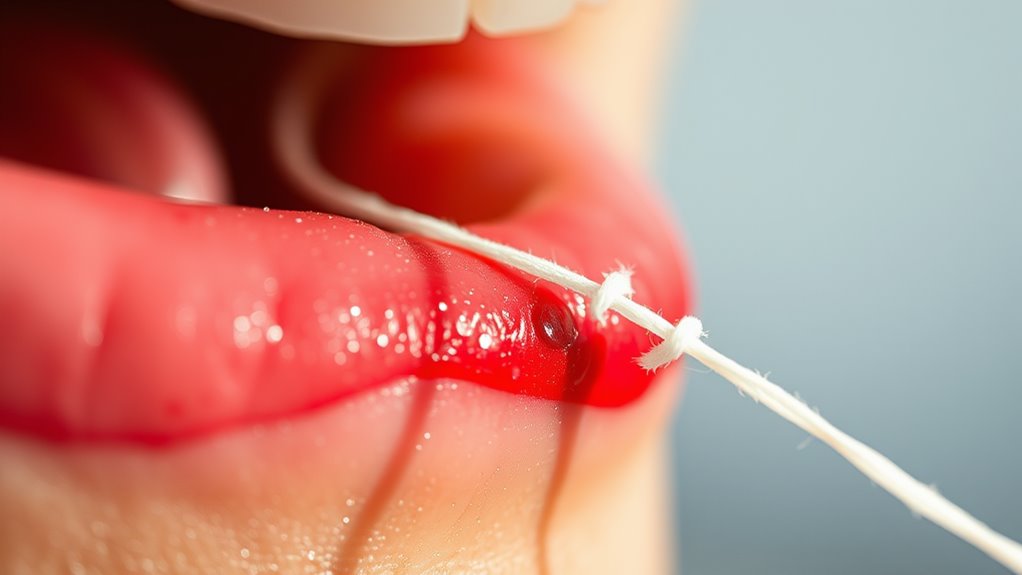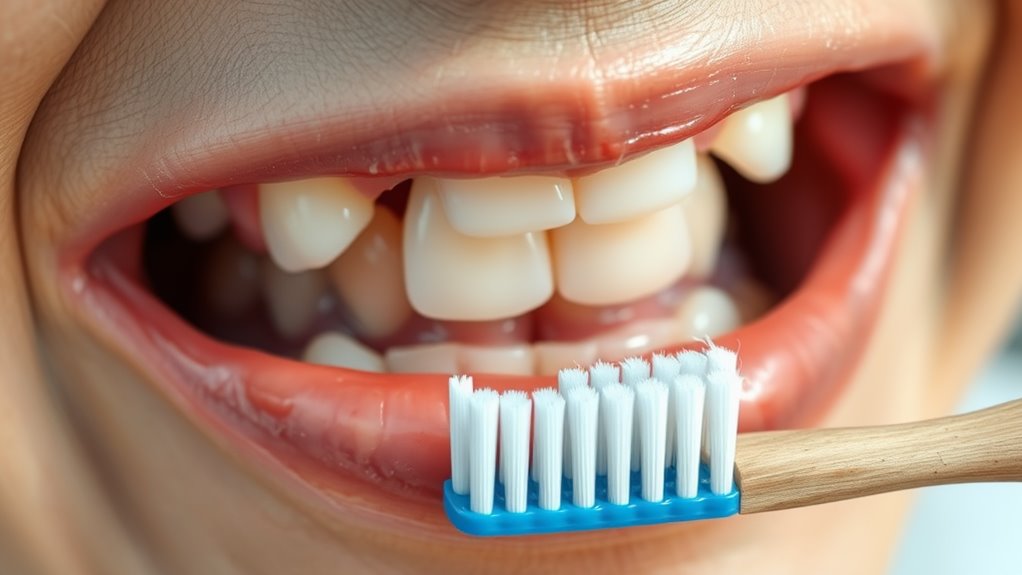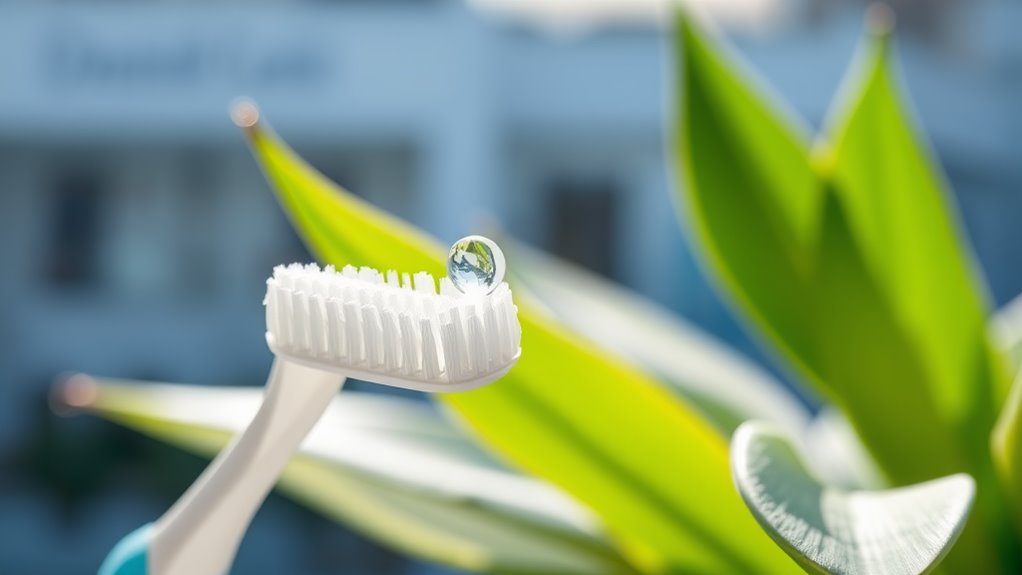Brushing Twice a Day. You Might Be Doing It WRONG!
You’ve been brushing your teeth since childhood, but there’s a good chance you’re making mistakes that could harm your dental health. Despite your daily dedication, common errors like pressing too hard or rushing through your routine can actually damage your teeth and gums. Even the way you hold your toothbrush matters more than you might think. Understanding these missteps and learning proper techniques will transform your twice-daily ritual into truly effective dental care.
Common Brushing Mistakes That Damage Your Teeth
Three common brushing mistakes can seriously damage your teeth over time.
First, you’re probably pressing too hard with your toothbrush, wearing down tooth enamel and irritating your gums. Switch to a soft-bristled brush and let it do the work, not your arm muscles.
The second brushing mistake is rushing through the process. You need a full two minutes, systematically cleaning each quadrant of your mouth for 30 seconds.
Most critically, you’re likely brushing right after acidic foods or drinks. When you consume things like coffee, citrus, or wine, your enamel temporarily softens. If you brush immediately, you’ll scrub away this weakened enamel. Additionally, aggressive brushing can lead to gum recession, exposing sensitive roots and increasing your risk of cavities.
Instead, wait 30 minutes after acidic foods, allowing your saliva to neutralize the acid and your enamel to reharden. Meanwhile, simply rinse with water to minimize acid exposure.
The Right Way to Hold and Move Your Toothbrush
Two key factors determine proper toothbrush technique: grip and motion.
Hold your toothbrush like a pencil, maintaining a light but controlled grasp between your thumb and fingers. This precision grip prevents excessive pressure that can wear down enamel and irritate gums.
For optimal cleaning, position your brush at a 45-degree angle against your gum line. Use gentle, circular motions rather than aggressive back-and-forth sawing. This method effectively dislodges plaque while protecting your gums.
Don’t forget to clean every surface – outer, inner, and chewing.
When brushing inner surfaces, tilt your brush vertically and use short up-and-down strokes. For your front teeth’s inner surfaces, turn your brush upright and use the tip for better access.
Remember to clean your tongue with either the bristles or a tongue cleaner. Your movements should be methodical, spending about 30 seconds on each quadrant of your mouth for thorough cleaning. Additionally, ensure you are using gentle circular motions to avoid harming your enamel and gums, as recommended by dental professionals.
Choosing the Perfect Toothbrush and Toothpaste
Mastering proper brushing technique is only half the battle – you’ll also need the right tools for optimal oral health. Your toothbrush choice can significantly impact your dental care routine’s effectiveness, while the right toothpaste formula ensures maximum protection against decay and sensitivity.
-
Select a soft-bristled toothbrush with a head size that fits comfortably in your mouth – harder bristles can damage your gums and enamel, while an oversized brush head might miss hard-to-reach areas.
-
Consider electric toothbrushes with pressure sensors and timers to prevent aggressive brushing and ensure you’re spending enough time cleaning each section of your mouth.
-
Choose fluoride toothpaste with the ADA Seal of Acceptance, and match additional ingredients to your specific needs (whitening, sensitivity relief, or tartar control). Be cautious of toothpastes containing Triclosan, which may pose health risks and disrupt hormones.
-
Replace your toothbrush or brush head every three months, or sooner if the bristles become frayed or you’ve been sick.
Time and Pressure: Getting the Balance Right
Dentists often emphasize that brushing isn’t just about going through the motions – it’s about finding the sweet spot between thorough cleaning and gentle care.
You’ll want to aim for a full two minutes of brushing, dividing your mouth into four quadrants and spending 30 seconds on each. Using a timer can revolutionize your routine and ensure you’re giving each section proper attention.
When it comes to pressure, think of brushing like polishing a delicate surface. You need just enough force to remove plaque – about the weight of an orange – but not so much that you damage your enamel or gums.
If your bristles are splaying outward after a few weeks, you’re pressing too hard. Consider investing in an electric toothbrush with a pressure sensor that alerts you when you’re being too aggressive. This technology can help you master the perfect balance and protect your oral health for years to come. Additionally, using gentle, circular motions can enhance your brushing technique and improve overall cleaning effectiveness.
Beyond Brushing: Essential Steps for Complete Oral Care
While proper brushing technique forms the foundation of oral health, it’s only one piece of a larger puzzle. To achieve optimal dental wellness, you’ll need to embrace a comprehensive approach that goes beyond basic tooth brushing.
-
Integrate daily flossing into your routine – it reaches crucial areas between teeth where your brush can’t access, removing trapped food particles and preventing bacterial growth.
-
Use an alcohol-free antimicrobial mouthwash to eliminate harmful bacteria and freshen breath – swish for at least 30 seconds after brushing for maximum effectiveness.
-
Clean your tongue with a scraper or brush to remove bacteria buildup that causes bad breath and affects taste perception.
-
Schedule regular dental checkups every six months for professional cleaning and early detection of potential issues – these visits can identify problems before they become serious concerns, as neglecting routine dental check-ups can lead to serious oral health consequences.




